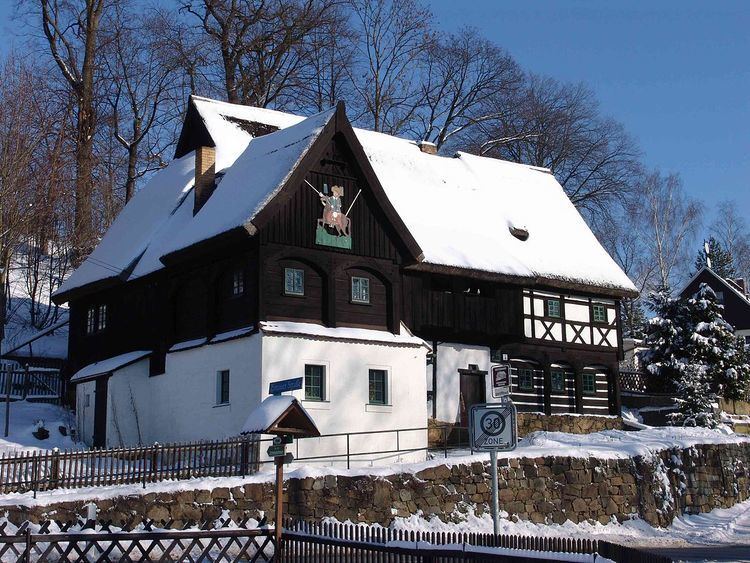 | ||
The Upper Lusatian house or Umgebindehaus is a special type of house that combines log house, timber-framing and building stone methods of construction. It is especially common in the region running from Silesia through Upper Lusatia and North Bohemia and into Saxon Switzerland, as well as East Thuringia.
Characteristics
The Upper Lusatian house is defined by the constructional separation of its living area from the roof, or its living area from the upper story and roof. The main characteristic of the normal type is "a wooden support system, which runs around the living area of the house made of logs or boards, which has the job of freeing the frame of the living area from the weight of the roof (in single-storey houses) or the roof and upper storey (in two-storey houses)."
Upper Lusatian houses are transversely divided Middle German houses or Ernhäuser. The hallway runs transversely across the house and separates the ground floor into living and working areas. The living area or Blockstube is usually located at the eastern or southern gable end in order to protect it from damp. The working area, of solid construction (usually rubble stone) is located opposite the Blockstube. This is where the animal stalls or stables, store rooms and barn are housed. A building in which the solid section is replaced by another Blockstube is known as a Doppelstubenhaus ("double living area house").
Above the Blockstube (Handweberstube) the upper storey or roof rests on wooden posts that are stabilised by triangulation with jetty brackets (Knagge) or braces (Kopfverbund). It is thus independent of the carrying elements below it and may be freely worked on. The upper storey is usually of timber framed construction. By contrast, especially in North Bohemia, the upper storey is made of log cabin construction.
